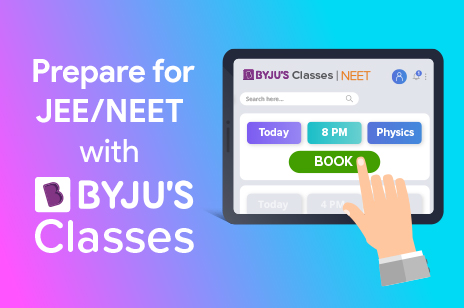BYJU'S NEET Education Forum
Welcome aboard visitor! Your search has ended at just the right place. In this world of NEET questions, you can expect to explore all the NEET-related concepts that you are required to be acquainted with.
This page provides direct links to a plethora of questions and answers for NEET, designed and developed by professional academicians mapped with NEET syllabus. Questions from all four sections of NEET – Physics, Chemistry, Botany and Zoology are delivered here where utmost importance is given to students' needs of easy comprehension, to-the-point solutions and precision.
The information centre we offer at BYJU'S is renowned for its many attributes, some being, crisp information, ease of access, student-friendly approach and accuracy in answers – exactly what students look for!
With this forum of NEET questions and answers, students can be equipped with the correct explanation of each question asked in the question paper. Furthermore, these are great resources to gain insights into different topics in NEET such as Ecology, Genetics, human reproduction, mechanics, equilibrium, chemical bonding, properties of elements, periodic table to name a few.
Featured Videos
All your doubts will be answered
Book a Free ClassTestimonials

Arfaat K | AIR 18 - NEET 2020 |
My NEET preparation would not have been complete without BYJU'S. The video lessons, with their simple language and visualisation, helped me learn concepts clearly. The All India Test Series helped me benchmark my preparation against other aspirants on a national level.

Sai Trishna Reddy | AIR 6 - NEET 2020 |
The best part about the BYJU'S program is that it was personalised for me. I could watch the videos repeatedly and clear my doubts in any concept. The practice test and quizzes helped me improve my timings and accuracy in the exam.





